
Downhill Skiing - Quick Guide
Downhill Skiing Overview
Downhill Skiing is an ice race that emphasizes more on speed. It is the fastest racing game over the ice, where players reach nearly 130km/h in international competitions. The athletes taking part in this game must possess aerodynamically-efficient tuck position to minimize drag and increase speed. The term downhill skiing is used as a synonym for alpine skating, both in the FIS sport as well as recreational gaming. The purpose of this game is to speed down the icy mountains while sliding down the slope with a great speed, and reach the finish line. During the game, speed is the only factor that creates the record.
Objective and History
The rules of this game were originally designed by Sir Arnold Lunn for the British National Ski Championship, held for the first time ever in 1921. Since then, the highest recordedtop-speed was 160km/h. This record was broken in the year 2013. As discussed earlier, the theme of the game is to attain maximum speed during sliding downwards the hill.
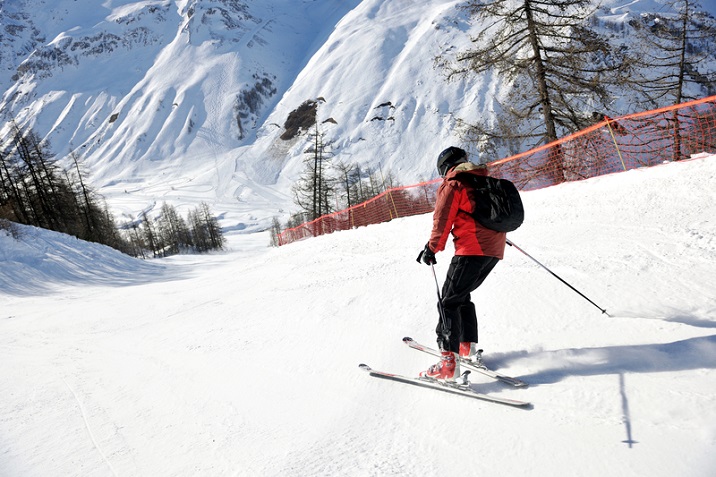
Every game has its key characteristic feature as the backbone of the game, and downhill skiing takes its major hand at the speed at which the skiing takes place. Players tend to gain speed as much as possible in the race to attain the top position in the list of the best skiers.
Team Size
In the game of downhill skiing, team play takes a backseat. Any number of players can take part in the game and try winning the race. Climbing an icy mountain, all the players get pooled over there where the race is to be started. Individual aim is to reach the finish line called gate faster than other skiers. The flow continues with a technique followed by the player in the game.
Mostly, this game is played for recreation over the slopes of mountains covered by snow. Hence, the team consists of a minimum of one person playing individually for their own mirth and indulging.
Downhill Skiing Participating Countries
Since 1936, downhill skiing has been a part in the Olympics. It has a great presence in the alpine skiing with many disciplines that hundreds of contestants enthusiastically participate in. Austria is in the lead of the competitions. In major competitions in the Olympics, the most number of medals have been won by Austria both in the sections of men and women.
A total of 114 medals comprising 34 gold, 39 silver, and 41 bronze medals in the Olympics takes Austria in the top of the list in downhill skiing. During the 2014 Winter Olympics, a total of 74 nations had been registered for downhill skiing competitions.
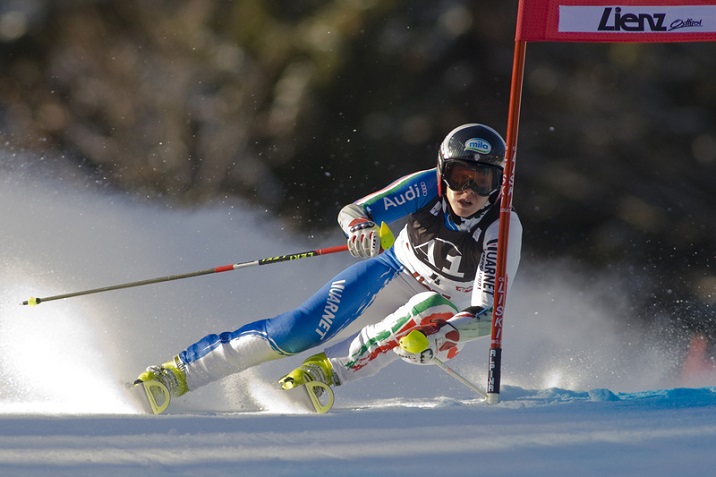
The countries participating in the Olympics events are: Albania, Andorra, Argentina, Armenia, Australia, Austria, Azerbaijan, Belarus, Bosnia/Herzegovina, Brazil, Bulgaria, Canada, Cayman Islands, Chile, China, Croatia, Cyprus, Czech Republic, Denmark, Estonia, Finland, France, Georgia, Germany, Great Britain, Greece, Hungary, Iceland, India, Iran, Ireland, Israel, Italy, Japan, Kazakhstan, Kyrgyzstan, Latvia, Lebanon Liechtenstein, Lithuania, Macedonia, Malta, Mexico, Moldova, Monaco, Montenegro, Morocco, New Zealand, Norway, Pakistan, Peru, Poland, Portugal, Romania, Russia, San Marino, Serbia, Slovakia, Slovenia, South Korea, Spain, Sweden, Switzerland, Tajikistan, Thailand, Timor-Leste, Togo, Turkey, Ukraine, United States, Uzbekistan, Venezuela, Virgin Island, and Zimbabwe.
All these countries take part in the Olympics in downhill skiing. Among these participating countries, the lead position is taken by Austria. Since beginning, the Olympics had been conducting this game with few disciplines but after a decade or more, the other disciplines were added leading Austria to get the most number of medals in all of them. According to 2014 quota allocation, 22 athletes qualified for alpine skiing.
Downhill Skiing Environment
Ground Design
Downhill skiing needs icy regions like a mountain or hill which is being covered by ice forallowing the gliders to slope over to reach the bottom. Most skiing takes place over the icymountains, particularly on easy-to-turn all-mountain skis with slopes covered with ice, toslide over and glide to reach the bottom of the mountain.
Size of the Field
It is generally the decision of the committee or the club that offers the competition. Thelength is decided and the players should be ready to glide over the specified lengthreaching a higher speeds of 130kmph. It is not a big task for these speeds to be crossedby the skiers. The distance estimates the velocity and the skiers determination.
The mountains are the best chosen grounds for this game, because of its vastness andfree allocated space.
Equipment Used in Downhill Skiing
Skiing is fun and with proper equipment, it is the best ice game ever played. For thedownhill skiing, the proper equipment is to be used for endorsing the game. The followingis the list of equipment used for the game.
Skies
Skies had significantly evolved since 1980s, the modern skies are shaped in a convincingway to enable carve turning. It is a semi-rigid material with a narrow strip worn underfootfor gliding. They are in pairs, attached to ski boots with ski bindings.
Bindings
The first binding Kandahar was introduced in the year 1930 which can be locked down at the heel for the portions of downhill. Until 1960s, the Kandahar was widely-used for the game. During 1950s, there were many broken legs due to this and then spade-man binding was developed. In the modern age of skiing, there have been many developments in the binding and other safety equipment that resulted in reducing spiral factures.
Boots
In the recent days of skiing debut, the boots were short cut up to the ankle which limit the sideway rotating force thats applied. In 1966, plastic ski boots entered the market. Compared to leather boots, the plastic ones enhanced the lateral stiffness, and in turn, the amount of control over edges in the ski.
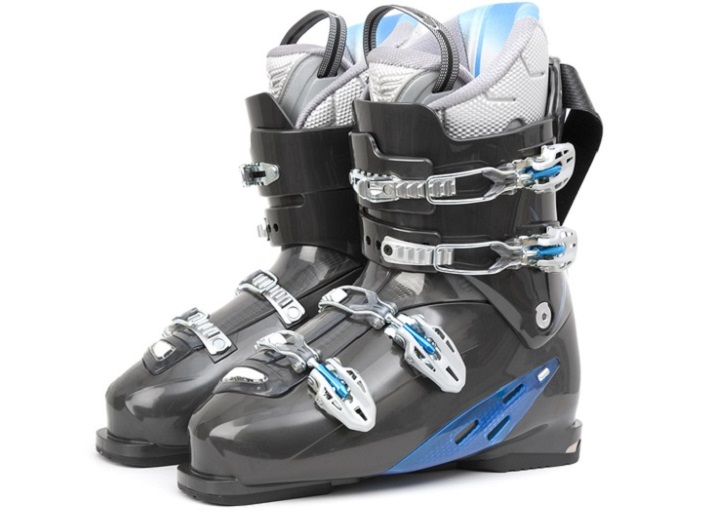
Helmets
Rarely helmets were used until 2000. But about 2010, most of the players were seen wearing a helmet in the game. Helmets are of many styles, typically with an inner padding to a hard plastic shell.
Due to the frequent twisted fractures, there was a major development in the dress and equipment to avoid the accidents and allow the skiers to glide at a faster and safety zone. There are significantly more knee injuries in the game, as compared to others. More than 1000 people ski a day, on an average of three to four people require medical attention. Out of the most 33 percent are only knee injuries. Most of the accidents were the results of errors of user leading to an isolated fall.
Downhill Skiing Terms
The following terms are frequently used in connection with Downhill Skiing −
Audio Helmet − Helmet with speakers allowing to listen music while skiing.
Avalanche Control − Triggering avalanches artificially, controlling explosions to create slope for skaters.
Bomber − Slang for a skier flying down the slope in a fashion out of control.
Bowl − Mountain Basin, free of trees used for swooping turns or steeps and speedy drives.
Carving Ski − Narrow skis made for clean and tight turns.
Cat Tracks − Flat paths used to move around a mountain. These are mostly used by skiers to reach different places within a resort.
Crust − A frozen layer covering soft snow or buried under fresh dusting of snow.
Death Cookies − Term for cookie sized ice chunks formed by snowmaking. A plague mostly found in resorts of New England and not seen in Western resorts.
Bid − mountain resorts
Dump − Fresh powder of the snowfall.
Durometer − An instrument used to measure hardness of ski boots made of plastic.
Edge − A sharp metal strip on skis side, used in controlling by biting into snow.
Fall line − The direct line down a slope.
FIS − French acronym for International Skiing Federation.
Foot bed − The part of ski boots that is removable and lies inside the boot.
Freestyle − A style of skiing mostly based on tricks.
Fun Box − A box in terrain parks for sliding across on snowboards or skis.
Glade − A stand of trees.
Gondola − A closed lift that can fit four to eight passengers; generally faster than open chair lift.
Grab − While in the air, holding any part of the skis or snowboard; used to maintain balance and also taken as a style in skiing.
Grooming − A form of trail maintenance. For spreading new snow and to smooth over icy patches, bumps and other obstacles. For this, tractors i.e. Snow-cats are used.
Hard pack − Hardly packed snow because of repeated grooming.
Heli-skiing − The best skiing for experienced and experts in skiing. Skiers are transferred using helicopters to ski off-trail through fresh tracks. Not for everyone because it is highly dangerous.
Huck − To launch a jump.
In-bounds − Ski terrain inside the ski resort boundaries.
Indy Grab − Grabbing toe edge of snowboard between rear hand binding.
Jib − Riding across a non-ice surface.
Kicker − A jump in the shape of a cheese-wedge, often built for trick sessions.
Last − Term used by a boot maker for the shape of interior of the boot.
Vertical Drop − The distance between base and mountains tallest point.
Downhill Skiing - How to Play?
This sport is a good exercise for mind and body. It improves physical abilities and skills while making the participants entertained, and in most cases the spectators too. There are sports for recreation and amusement all over the world but few are taken into count by international groups and organisations for competitive purposes. One of which is downhill skiing.
Its a sensation that is incomparable to any other thing in the world of sports. In a line, very few sensations can be compared to this. You can be a first time skier or a pro. There are few basic assumptions and steps to be followed while any skier gets himself onto the ice. Before the skiing begins, let us navigate through how to make yourselves ready to involve in the fascinating event of downhill skiing.
Gearing up with boots, right skis, poles and bindings is the key for any best possible experience on the icy mountains. The gear can make and also can break your trip. These are few basic steps and rules that will be teaching any beginner the game of downhill skiing.
Get Ready for Skiing
Alpine skiing involves a lot of climbing, more often at high altitudes. Hence the skiers should be strong enough and in very good physical condition.
Ensure all the mates have an avalanche gear, a compass, a map, a whistle or radio that are properly functioning and a clear understanding of the plan. Practise well the tricks of basic skiing and get yourself boosted up with confidence.
Skiing is fun, only with proper gear. If there is any mistake in the gear the skiers may end up dying in frostbite.
Firstly, prefer long and warm underwear.
Choose shirts that are thermal, thick and wicking for maintaining the heat around the body. The shirt should be fitted to your body and must not slide while walking.
Thermal pants that are tight, thin and pressed up against the legs.
There should be no exposure of skin to direct air. Cover the entire body with a warm cloth like wool and others.
Avoid using cotton-clothes as additional layer because cotton cannot wick moisture like other synthetic materials.
A long neck will be preferable as it keeps the body warmer than other garments.
Sweatpants should be relatively tight else it can be bulky to put anything else.
The third layer should be a ski jacket. This doesnt need to fit perfectly.
Ski jackets are specially made to keep the body warm unlike other sweaters and cotton garments.
Put on ski pants after that. Specially look for ski pants because they have an inner layer to keep legs warmer, which is very helpful.
The ski socks should be thin but warm. At any cost, wrinkles should be avoided.
Ski boots that can clip to the skis are mostly used during skiing. Hence, selection is very important.
Goggles arent compulsory but there is a great amount of good done by these. If it is precipitating or a windy day, goggles help you a lot. The bigger goggles, the better is the impact of protection of your eyes.
The next recommended item is a gator. They are basically felt tubes that slips on the neck, which can be pulled over the mouth on cold days.
Take a hat or a helmet. If the skiing is through glades, a helmet is preferred than a hat. If the player does anything dangerous, there is a chance of accident even at an expert level. So wearing a helmet is highly recommended.
Ski gloves should be thick and make sure that they are not regular. They have a rubber lining and thick grip. If they arent worn, the skier may have the impact of frosting in an hour at minimum.
After getting ready with the dress the skier needs to know about some basic steps in the process of skiing.
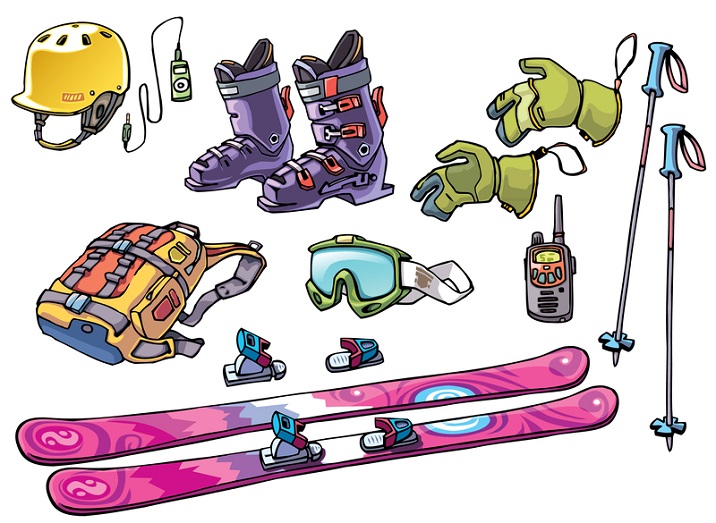
All beginners should follow these sequences in order to maintain a safe glide. The steps are listed below −
Make sure the skis are put properly by jumping several times after they are worn. This gives a firm grip to the feet during gliding.
If skiers are not using any poles, let them waddle walk for practise until they learn how to use the skies effectively. If they use poles, they should learn how to use the poles properly and using pole straps before going on to any run.
The ski lift are of different types. For a chair lift, the skier should wait behind the line and go as fast as they can before next chair arrives.
Different ski grounds have different criteria for beginners. The beginners should make sure that they might not commit something so called icy or steep. Before beginner gets up there, it must be checked thoroughly.
Learning how to stop should be at the top priority.
In order to reach the next stopping point, the beginners should learn to take a minimum number of turns i.e., the skier should take one or two turns before coming to rest at the stopping point.
Slowly, practise and build your confidence for better run and expertise in the game.
After attaining a certain stage of basic requirements, the steps to be followed are −
One of the most important thing in skiing is learning how to stop. To control the speed most skiers spread their skis in a pizza shape called wedge. This will allow to control speed and direction of skiing.
Keeping a centred stance is important. Moving all the joints, knees and ankles, bent slightly. While doing this, make sure that the shins on the boots should be pressed.
To glide faster, keep the skis straight. And to go slower, legs should be opened sideways and spread out the tails of the skis wider. This will make a bigger wedge, until you lower your speed and finally stop.
To turn, pivot with your lower body is known as stemming. Turn the skies slowly to your desired direction. First your legs should turn, before your body does. When you start skiing, the body feels some skidding as you enter a turn.
Learn providing pressure to downhill skiing as this makes turns easier. Try to ski while lifting the downhill ski off the snow. Remember, providing pressure to downhill rather than uphill skiing makes easy to take turns.
No matter how much speed the other skiers glide, it is the full responsibility of yourselves to stay and glide at a controllable speeds. Remember, racing is for experienced skiers and not for beginners.
The conditions for imposition of penalty are listed as follows −
Any attempt that leads to commit an offense in the game is considered as conduct for penalty imposition.
In the case of emergency, the conducted offense may be considered.
Any planned accidents in the game are considered as eligible for penalty.
Alpine skiing is now a very popular winter pastime game. To an estimation there are nearly 300 million skiers and snowboarders in the world today. The average visits only in USA are nearly 57.5 million with a record of 60.5 million alone in 2007-08. The game is full of fun and amusement throughout but there are few angles to be taken care of while it is being played.
Injuries occurring at head, knees, shoulders, spinal, thumb and wrist get reported in a higher frequency by the skiers. This may be due to lack of effective training or negligence of planning for success with a false action.
The skull injuries were reported to be minor frequently. But the 10% injuries which are at higher risks were to be taken seriously and prevented by gradual precautionary actions. The minor injuries were due to collision during a slide with the ground or mountain rocks or wood along the track. They can be easily eradicated if the skier takes few precautionary steps.
Knee injuries were common during a ski due to the twisting force generated during the transmission leads to fall and then breakage of lower leg bones. The development of release bindings reduced this adverse effect of knee fractures. But still 30-40% of the injuries occurring in alpine skiing were related to knee injuries.
Shoulder joint injuries may occur due to sudden fall down at the time of skiing. If the causality falls with an out stretched hand on to the ground may result in shoulder fracture.
Downhill Skiing Variants
The Federation of International skiing was found in the year 1924 which was the same year for its first debut at the Chamonix Winter Games. Maybe in one or the other forms, Skiing made itself a permanent game held at the Olympics. There are various disciplines of the game but in the Olympics, there are only six faces of this game which are Alpine, Cross Country, Ski Jumping, Nordic Combined, Freestyle, and Snowboarding.
Alpine - Downhill and Super-G
This consists ten events five each for men and women. In the alpine skiing, the downhill features the highest speeds and longest course. Super Giant Slalom is referred to as super-G, an interesting event that unites the downhills speed with prcised turns of giant slalom. The winner is the one who completes a single course with a fastest time.
Alpine - Salmons/super combined
This game consists of shortest course and quickest turns. The giant slalom consists of wider and fewer turns with a smoothness in them. In this game, the skier has to make two run downs to two different courses along the same slope of the runway. Both the times are added, and the sum of fastest total time discloses the winner. In the super combined event, one-run slalom follows one shortened downhill run. Together the sum of times is calculated and the player with fastest total time is the winner.
Cross Country
With 12 different cross countries this skiing event takes place. Women take part in the sprint, team sprint, 10km individual, 15km pursuit, 30k mass and 4x5km relay. Men compete in events similar to women till 15km pursuit but the mass happens to be with 50km, relay with 4x10km.
Ski Jumping
This game is currently played only by men and it includes three events which are the individual hill, normal hill, and large hill team events. In individual events, every individual gets two jumps and the player with highest score combined is the winner. Whereas, the team event consists of four members per team and the team finalizes to eight best teams soon after the first jump.
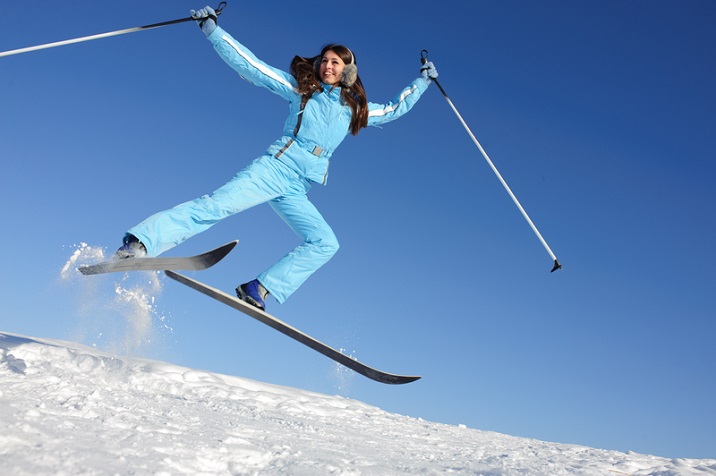
Nordic combined
In this face, it has three events, each featuring a ski jumping competition and a cross-country ski race. For a normal hill Gundersen event, ski jumping is done on a normal hill of 90mts. For large hill events and team events, the hill height is 120mts. In the cross-country event it takes a 10km race and the team has a 4x5km relay.
Snow Boarding
On the programme of Winter Olympics there are six snowboarding events. Women and men half pipe, women and men parallel giant slalom, women and men snowboard cross.
Freestyle Skiing
In the Olympic programme, as followed by Vancouver Games there are three freestyle skiing events each for men and women. In addition to the mogul and aerial competitions, its debut for ski cross is made in 2010. The mass start of all the four racers set stage for fast and exciting competitions made to test the skills of skiers in the turns of a variety of types and sizes, traverses and flat sections, as well as banks, ridges and rolls. The skier with the highest speed wins.
Downhill Skiing Tournaments
There are a total of ten events before the occurrence of Nations Tea event taking place. The game is played by both men and women and for both the genders, similar events are given with a slight modified distances. The Alpine World Ski Championships are organised by FIS.
Until the World War II, the competitions were held annually in Europe. In 1941, only the countries that hadnt taken part in the war participated in the competitions. But unfortunately, the result was cancelled by the FIS due to the minimum number of participants in the game. Hence, the event was considered as an unofficial event.
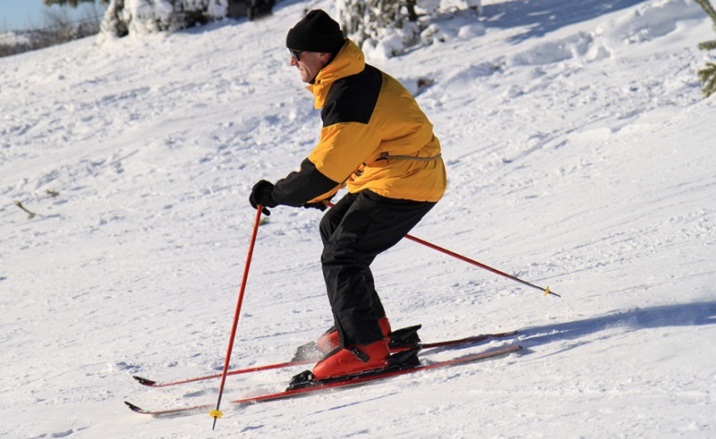
For several decades, this game was held in even-numbered years with Winter Olympics acting as World Championships until 1980. The 1950 Championships held at Aspen, United States were the first official championships held outside Europe. The giant slalom was added to skiing in the year 1950. The combined event returned to skiing as a paper race. FIS World Championship medals were awarded in the combined events.
Types of Events
The different types of events that take place are as follows −
| Men's category | Women's category |
|---|---|
| Men's Combined | Women's Combined |
| Men's downhill | Women's downhill |
| Men's Slalom | Women's Slalom |
| Men's SuperG | Women's SuperG |
The main event for Nations Team get conducted at the end of all other events. There are many features on which the scoring is made in which participants are rated as per the speed they attain. In some events, styles and tricks are considered.
Downhill Skiing Champions
The first ever championships for downhill skiing were held in the year 1931 in Murren. The title was won by Walter Prager for downhill skiing. The title for slalom was won by David Zogg. After a few years, new disciplines were added and the competitions for those too were held in the later years.
The following table contains champions of Downhill Skiing −
| Men's Category Champions | Women's Category Champions |
|---|---|
| Patrick Kueng of Switzerland for downhill skiing. | Tina Maze for downhill and combined skiing. |
| Jean-Baptiste Grange of French for Slalom. | Mikaela Shiffrin of USA for slalom. |
| Marcel Hirscher of Australia for combined. | Anna Fenninger of Australia for giant slalom and superG. |
| Ted Ligety of America for giant slalom. | Lindsey Caroline Vonn of United States for super-G, giant slalom. |
| Hannes Reichelt of Australia for superG. | Maria Hfl-Riesch of West germany for Downhill, super-G, slalom. |
Many players get banned out of the competitions and other events that take place. These players mostly wind up as amateur players who are out of the competition but are not to be considered non-talented players. The competitions that are held locally, nationally and internationally encourages people who are interested to be in the team of skiers.